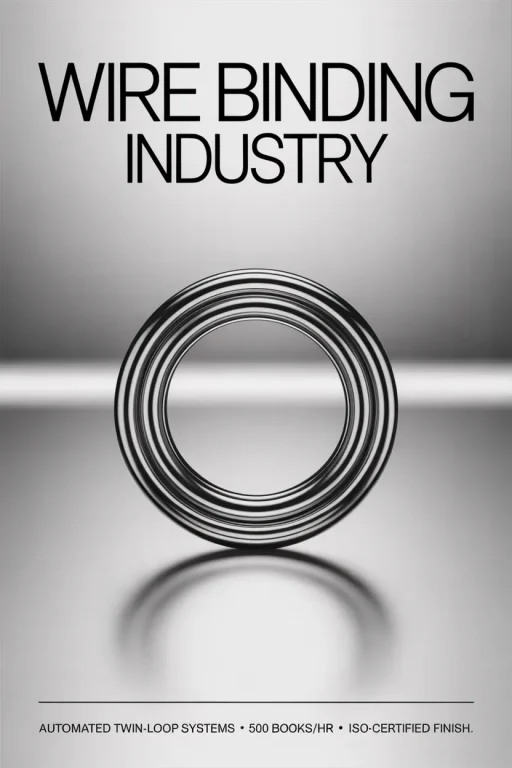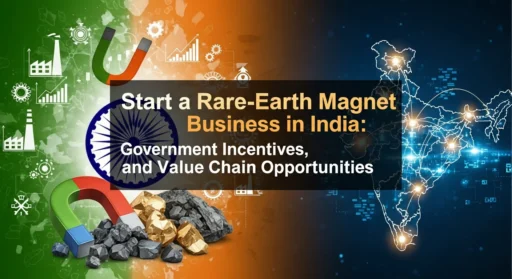In the year 2023, the wire binding machine market stood at USD 1.1 billion, which was estimated to grow to USD 1.8 billion in the year 2031 (6.7 percent growth rate). More detailed works also estimate the binding machines market (comb, thermal and wire) will be approximately USD 1.39 billion in 2025 and USD 1.97 billion in 2030 (growth rate of 7.22%).
Growth Drivers
This predicted growth can be attributed to some factors:
Increased office and school requirements in structured and professionally bound documents.
New technologies and automatization result in an improvement of productivity.
Expansion in new markets particularly in the Asia-Pacific and Latin America.
Wire Binding Industry Project Report.
Regional Outlook
In 2024, the binding-machine market (because of office infrastructure and automation) had a concentration of around 35% in North America, with the fastest-growing market in Asia-Pacific (due to increased education, active SMEs, and print demand). In the case of Europe, demanding sustainability requires are compelling binding solution adoption.
Demand Drivers and Trends in the market.
Key Drivers:-
Robotization and Digitalization: Efficient workflow with automatic and semi-automatic machines that have touchscreen displays and an AI option.
Branding and Customization: The market is experiencing greater demand in customized print documents including presentation folders and portfolios which are driving the market demands in flexible binding systems.
Sustainability: The increasing environmental issues are leading to the development of energy efficient and recyclable wire binding materials and equipment.
Market Challenges

The initial capital expense is high: High-tech automatic binding machines will cost high start-up prices and some smaller and middle-sized companies will not be willing to spend it.
Uncertainty of Raw Materials: The fluctuation of the price of metal and plastic will affect the profit margins.
Product Segmentation & User Applications.
Machine Type
Manual Machines: They occupy markets of approximately 45-60 percent; they are highly popular because they are easy to use and not expensive; therefore, suitable in small offices, homes, and educational institutions.
Electric machines occupy about 55 percent of the market and offer faster and efficient machines in bulk volumes.
Semi-Automatic Machines: This is a combination of man-to-manual control and automation which is preferred by people on medium scale.
Fully Automatic Machines: Are the most productive and least operator-controlled and target commercial printing houses and large businesses.
See our Handbook
By End-Use Segment
Corporate Offices: The increasing requirement in finish reports and presentations is creating more of a tendency to use automated systems.
Educational Institutions: Educational institutions across all levels will be binding reports, projects, and theses, but educational institution reports take the largest growth demand category; this mode is evident and powerful especially in the Asia-Pacific.
Commercial Printing/Copy Shops: Automation is finding increased demand in high volumes binding in a growing segment.
By Type of Application and Material.
Paper: The biggest form of use, approximately 40% paper will be the most dominant market driver.
Plastic & Other Media: The second segment is expanding at a very high rate particularly in the industrial and packaging segments; the plastic segment alone is predicted to increase at a rate of about 7.5%.
Manufacturing Process/Operation Overview.
What Is Wire Binding?
Wire binding (also termed as twin-loop, wire-O, or double-loop binding) is fundamentally where punch holes are made on sheets and then bonded on a C-spine made of metal and then welded together with a wire closer. The final product will be practical, professional and also lay flat, thus can be easily rotated.
Types of Pitch & Sizes
3:1 Pitch – Three loops an inch. Apposite to documents of between 120 sheets. Diameters of the spine are 3/16-9/16.
2:1 Pitch – Two loops an inch. Obtained to use with larger documents, 5/8 inch to 1 1/2 inch spines. Certain manufacturers are available in small sizes as low as 1/4.
Process Flow in Operations
Punching: punched holes of document edges using manual or automated punch units.
Threading: Making the pages on the wire spine, possibly with a hanger or human hand.
Closing: Wire closer is used to clamp the spine into a loop. Punching and closing are often optimized as individual operations in high volume operations.
Top Strategies to build a Startup and become an entrepreneur.
Start with manual and electric segments – Reduced barriers and prices make them a great initial entry point especially in academic, home office and small business segments.
Modify with the automation: Research the cheaper compact electric or semi-automatic versions that are performing well in the areas of price-points that attract mid-tier commercial customers.
Look to Asia-Pacific: The education and office are growing considerably therefore strategize regional manufacturing or distribution to tap the potential completely.
Differentiate with sustainability
Also, provide your customers with sustainable or eco-friendly machines and materials to reach the environmentally conscious buyers in Europe and North America.
Offer subscription models or leasing: Besides, enable small and medium-sized businesses to own machines as a service and reduce anxiety about spending cash upfront.
Related articles:- HT (High Tensile Wire) Manufacturing Industry
Challenges & Mitigation Strategies
Digital Displacement: Penetrate the niche markets for craft books, high-end photo binding, and packaging.
Capital Expenditure Constraints: Look towards leasing or subscription services and provide bundled training and support.
Raw Material Volatility: Emphasize local procurement or large-scale purchases to enhance cost-effectiveness.
High Competition: Distinguish on local customer support, customization, or environmental certifications.
Related articles:- HT (High Tensile Wire) Manufacturing Industry
About NPCS (Niir Project Consultancy Services)
NPCS conducts exhaustive market surveys and techno-economic viability reports with utmost care to present entrepreneurs with clarity, intelligence, and actionable advice. These reports include manufacturing, raw materials, plant layout, and financials to furnish real-world facts and planning materials, while NPCS assists startups in analyzing feasibility, reducing risks, and establishing new ventures with confidence.
Conclusion
The wire binding business is in a good position to take advantage of the steady, worldwide growth that is being driven by automation, personalization, and increasing markets, particularly in the Asia-Pacific region. As such, opportunities abound for new players. To get started, it is important to establish your position based on data, facts and direction from NPCS.
To begin with, it can be appropriate to cater to price-conscious segments (such as manual and electric machines) and then begin migrating towards automation and intelligent features.
In addition, think simplicity and sustainability. It could also be a good move to look at new business models, such as subscriptions or leasing, to generate new sources of revenue and reduce the barriers to entry for your customers. Finally, would also be a good idea to explore new business models like subscriptions or leasing to create new revenue streams and lower entry barriers to your customers. Lastly, pay attention to market trends and continually adjust your tactics accordingly.
Find the best ideas for yourself with our startup selector tools.
Frequently asked questions
Q1: What is the main advantage of wire binding?
Wire binding allows documents to lie flat and rotate fully, making them easy to handle and read.
Q2: Which regions are expected to see the fastest growth?
Asia-Pacific is projected to experience the highest growth due to its booming education and office sectors.
Q3: Are manual machines still relevant in the market?
Yes, manual machines remain popular for their affordability and ease of use, particularly among small offices, home users, and educational institutions.
Q4: How is sustainability influencing the wire binding industry?
Eco-friendly materials, recyclable wires, and energy-efficient machines are becoming increasingly important as buyers prioritize sustainable solutions.







